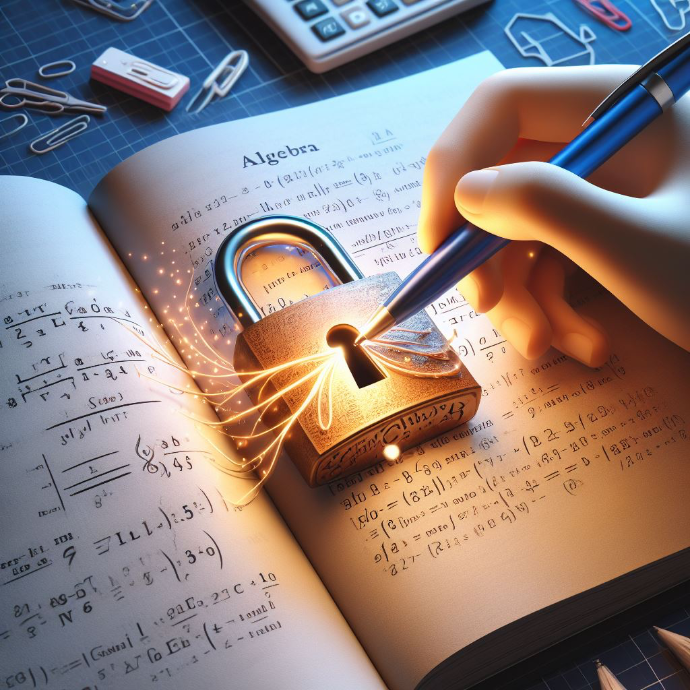
January 15, 2024
Strategies for Unlocking Algebra: Empowering High School Students
Introduction
Algebra, is often perceived as a mysterious realm of equations and variables, need not be an enigma. By employing effective strategies, middle and high school students can unlock the power of algebra and build a solid foundation for future mathematical endeavours. In this blog, we'll explore practical approaches to demystify algebra and empower students to embrace its beauty.
1. Solving the Puzzle: Learning from Solved Problems
Why Solved Problems Matter - Solving algebraic problems isn't just about finding the right answer; it's about understanding the process. Analysing solved problems provides valuable insights into the logic behind algebraic solutions.
Implementation Steps
- Curate Engaging Problems: Select problems that resonate with students' interests. Whether it's calculating the trajectory of a soccer ball or predicting population growth, relatable scenarios make algebra come alive.
- Deconstruct Solutions: Break down solved problems step by step. Encourage students to ask questions like:
- "Why did we choose this variable?"
- "How did we manipulate the equations?"
- "What patterns emerge?" - Generalise Strategies: Help students recognise recurring techniques. Factoring, substitution, and graphing are powerful tools. Understanding these strategies enables students to tackle diverse problems.
2. Building the Framework: Understanding Algebraic Representations
The Structure Matters - Algebraic expressions, equations, and graphs form the backbone of algebra. Students must grasp their structure to navigate this mathematical landscape effectively.
Implementation Steps
- Visualise Equations: Encourage students to sketch graphs corresponding to algebraic equations. Visual representations enhance understanding and reveal connections between variables.
- Translate Words to Symbols: Teach students to convert real-world problems into algebraic expressions. For example:
- "Three times a number plus five" becomes (3x + 5).
- "The sum of two consecutive integers" translates to (n + (n + 1)). - Explore Patterns: Investigate sequences, arithmetic progressions, and geometric series. Recognising patterns helps students predict outcomes and solve problems efficiently.
3. Choosing Your Path: Alternative Algebraic Strategies
The Toolbox Approach - Algebra offers multiple paths to the same solution. Students should learn to choose the most efficient strategy for each problem.
Implementation Steps
- Present Options: Introduce various approaches to solving algebraic problems. Discuss pros and cons:
- Graphical Method: Plotting points and analysing intersections.
- Algebraic Manipulation: Rearranging equations and isolating variables.
- Substitution: Replacing variables with known values. - Practice Decision-Making: Provide practice problems and encourage students to select the best strategy. Emphasize adaptability and flexibility.
4. Conclusion
Unlocking algebra isn't about memorising formulas; it's about embracing the logic, creativity, and versatility of mathematical thinking. By engaging with solved problems, understanding algebraic structures, and choosing effective strategies, middle and high school students can unlock the door to algebraic mastery. The NuLake series of eFlip Books implement the practical approaches listed above, to empower students to embrace the challenge, solve the puzzle, and discover the beauty of algebraic reasoning. Remember, algebra is an invitation to explore the universe of mathematical possibilities.🌟
Feel free to share your thoughts and experiences in the comment field below!
References
1. Teaching Strategies for Improving Algebra Knowledge in Middle and High School Students.
2. Goal of the Practice Guide.
Leave a Comment
Please note - comments need to be approved before posting.